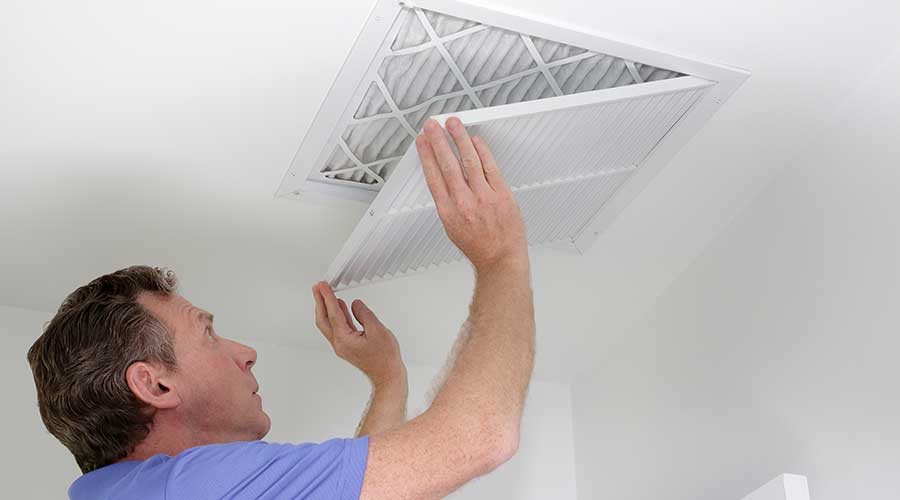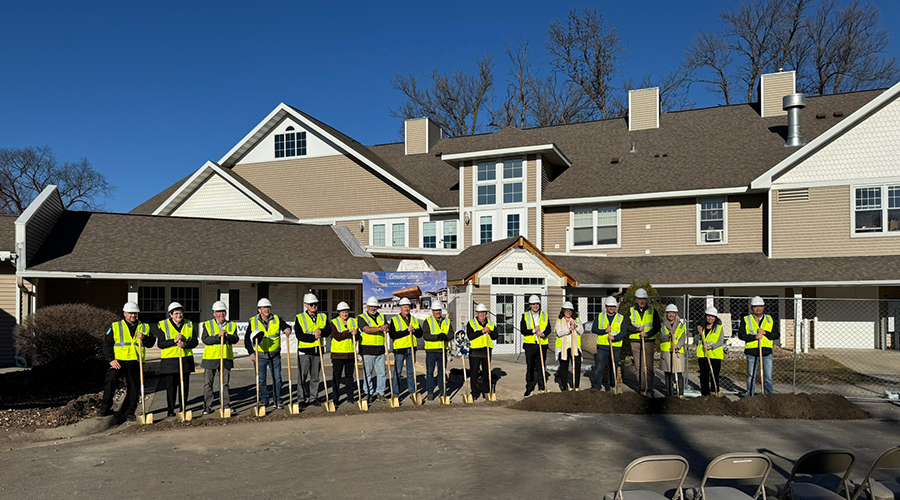The COVID-19 pandemic has shifted the way facilities managers think about indoor air quality (IAQ) – and hospitals and other healthcare facilities are no exceptions. The pandemic has proven that not providing clean, quality air and proper ventilation can increase the spread of viruses. In a healthcare facility, poor IAQ can be a matter of life and death. Despite increased pressure to improve IAQ, managers also must find solutions that can meet their facilities sustainable needs. Healthcare Facilities Today talks with Christopher M. Roman, director of business development – energy manager at Conservant Systems, on ways facilities managers can implement new systems to improve IAQ without sacrificing energy efficiency.
Healthcare Facilities Today: How can facilities managers improve indoor air quality while reducing energy?
Roman: There are several ways to improve the IAQ inside a medical facility. The first way is to focus on increasing the air changes per hour (ACH) and the percentage of fresh air intake to the facility. Increasing the air changes per hour means moving more air around the facility, which during the dehumidification season means that you must sub-cool more air to condense the moisture out of it and then reheat that higher volume of air to meet comfort and relative humidity control needs. So there is a double negative hit to energy consumption.
Facility managers may also opt to increase their minimum outside air (OSA) percentage from the ASHRAE minimum standard up to 20 percent, 30 percent or higher. However, this comes with a risk of greater energy consumption depending on the geographic climate/ microclimate that you may live within. During the summer, if your OSA has higher moisture content than the return air, then your HVAC systems (chillers, fans, pumps) will have to work harder to get rid of that moisture before it enters the building. During the winter, if the OSA is colder than the return air, the boiler and heating hot water pumping system will have to work harder, fighting against your climate change/environmental, social and governance decarbonization goals. The IAQ may increase, but at what cost?
A longer-term solution is to modify, retrofit or replace your existing air handling units (AHUs) to be able to improve temperature and relative humidity control while increasing your total filtration system efficiency and slightly increasing your ACH rate. Filtration efficiency enhancements are the result of layering the air filters in a manner that the first filters are designed to take out larger matter, while later filters are designed to take out even the smallest sub-micron particles like COVID-19 and other infectious diseases. The surface area of the filter systems should be as great as possible to extend filter change intervals to six months or more, which reduces the labor costs associated with filter changeouts and maintenance. The goal is to remove the most significant number of particles for the longest possible time, with a lifecycle cost that will not break the bank. If you modify your AHUs by adding better filters but do not reduce the face velocity of the filter media at the same time, your AHUs will run the risk of having higher static pressure losses, which may increase annualized fan energy. In many cases, adding better filters can actually hurt HVAC system performance as they can reduce the amount of air that can be delivered to your spaces, which can throw pressure balances off balance. The face velocity of an AHU is the measurement of air flowing across the cooling coil measured in feet-per-minute (FPM). If you check the design parameters of your current AHUs, you will typically find face velocities of 450–550 FPM. Depending on the application, your newer design AHUs should have a face velocity of 250–350 fpm, using deeper coils to help take advantage of the longer contact time between the air and the heat-transfer coils in the AHUs. This overall plan enables a reduction in static pressure losses across your AHU. These efforts result in superior indoor air quality, as well as annualized energy savings.
HFT: How do operational changes brought on from the pandemic negatively impact building energy usage? What preventative measures will stay?
Roman: During my time as an energy manager for Southern California Hospital System during the pandemic, the biggest change I noticed in operations was the switch to negative-pressure rooms in many new hospital areas. Typical HVAC designs are to have supply and return ducting for most hospital zones which recirculate the air to a certain degree. The operational change was to modify the hospital zones for any areas that were housing COVID patients to a negative pressure zone, and often this zone had no return ducting, or the return ducting was temporarily eliminated. The new path for the air was considered one pass through and exhausted to the outside, removing the circulation portion. This created significantly greater loads during the summer and winter seasons. Milder months had lower negative impacts on utility consumption rates and costs. Negative pressure zones are broken into four classifications; S, P, N, and Q, with Q being the highest level of negative pressure zones. Obviously, the more stringent classifications put additional stress on the HVAC system, but for good reason. The more stress or load on the HVAC system, the more energy consumption the system will use in electricity and natural gas. Since the pandemic has subsided, many of the strictest measures have been reversed or relaxed in hospitals today.
HFT: Beyond COVID, what are some other benefits of improving IAQ? Why should this be at the forefront of facilities managers' minds?
Roman: Indoor air quality has always been important throughout time. There are many risks associated with poor IAQ, and these have been well documented. According to the EPA, the health effects associated with poor IAQ are irrigation of the eyes, nose, and throat, headaches, dizziness, and fatigue, as well as respiratory diseases heart diseases and cancer. This is also commonly referred to as sick building syndrome. Generally, facility managers are well aware of these risks pertaining to poor IAQ as they receive complaint calls on problematic areas as they arise. However, this can be a very big risk to any business model if these problems occur or persist over time. According to HG.org, “lawsuits filed by attorneys in California over IAQ and sick building syndrome are increasing. The [World Health Organization] estimates that nearly 30 percent of new and remodeled buildings worldwide have indoor air quality problems." Obviously, a lawsuit payout of any kind will take away from the overall profitability of an entity. Therefore, paying particular attention to the systems that clean, filter, cool, dehumidify, heat and move our air around our facilities is becoming increasingly important. Specifically, the design and operation of AHUs are essentially our last line of defense before we breathe the air inside a facility.
Mackenna Moralez is the associate editor for the facility market.

 Healthcare Is the New Retail
Healthcare Is the New Retail Bridgeway Behavioral Health Services Launches Campaign to Renovate Health Center
Bridgeway Behavioral Health Services Launches Campaign to Renovate Health Center Ground Broken for New North Dakota State Hospital
Ground Broken for New North Dakota State Hospital AI Usage for Healthcare Facilities
AI Usage for Healthcare Facilities Ground Broken on Pelican Valley Senior Living Modernization Project
Ground Broken on Pelican Valley Senior Living Modernization Project